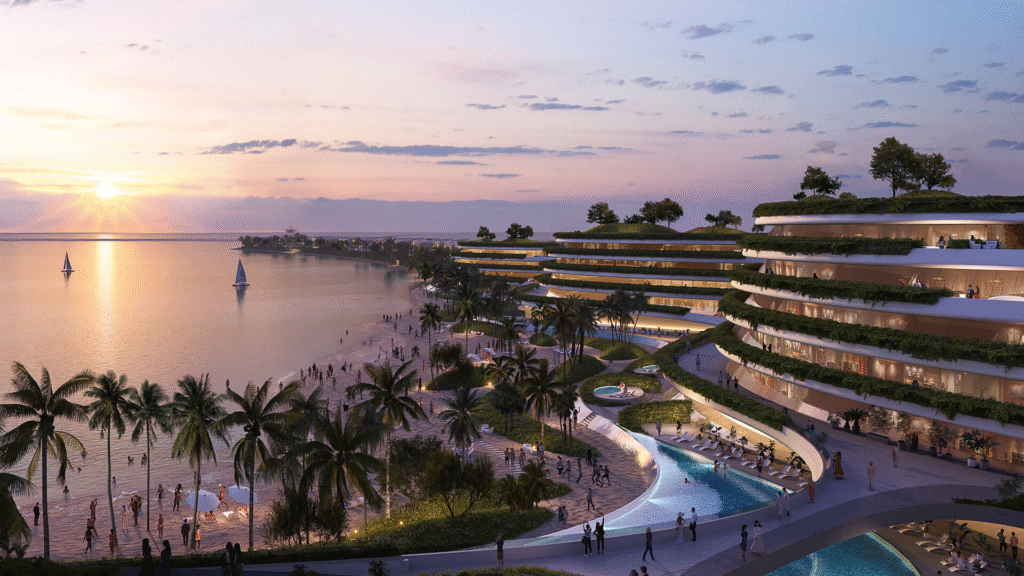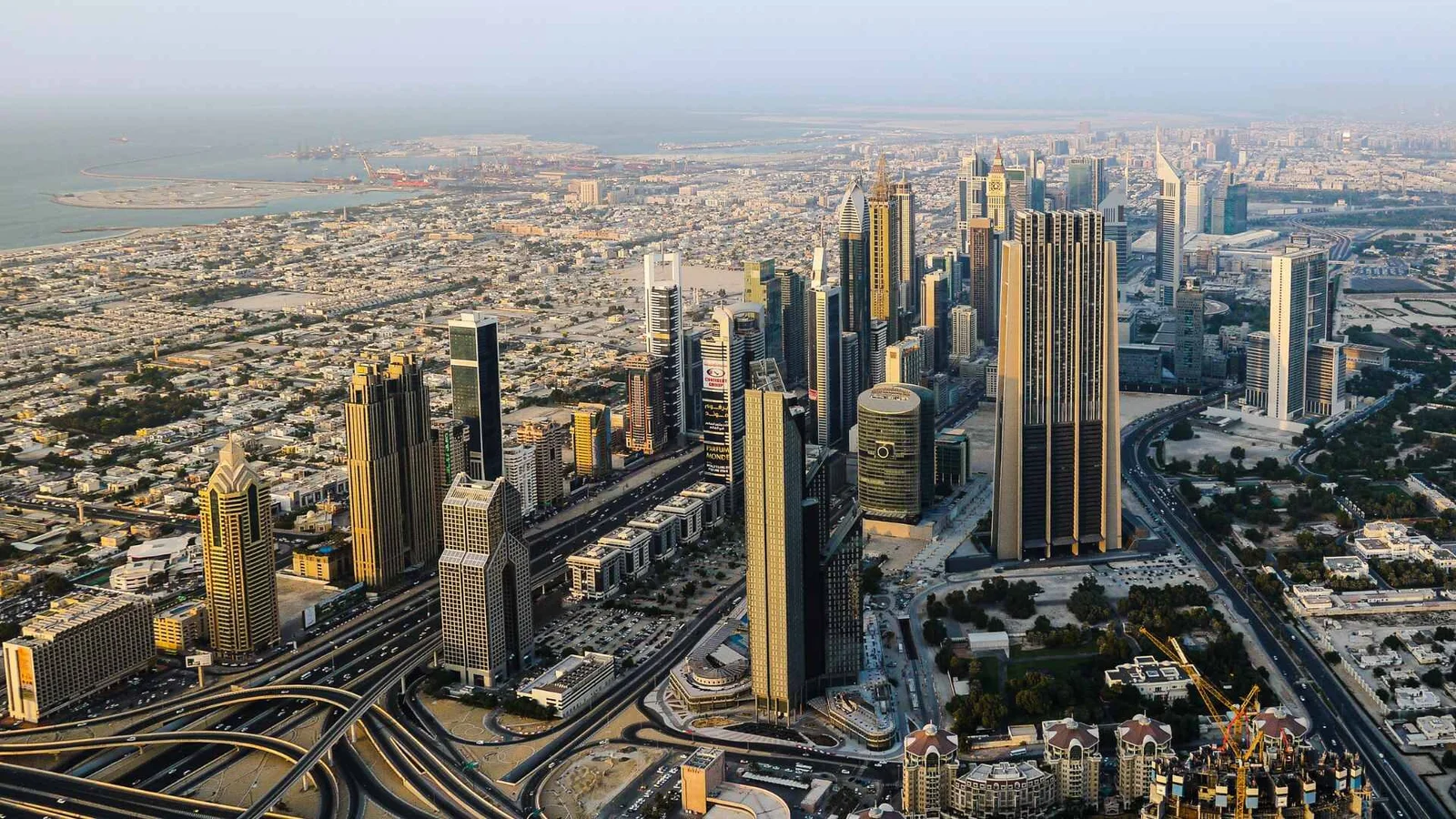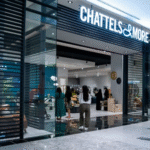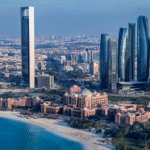Now Reading: Palm Jebel Ali Villas: New Launches Redefining Island Living
-
01
Palm Jebel Ali Villas: New Launches Redefining Island Living
Palm Jebel Ali Villas: New Launches Redefining Island Living

Table of Contents
Imagine waking up to the gentle lapping of waves, your private beach just steps away, and the Arabian Gulf stretching endlessly before your floor-to-ceiling windows. In 2025, Palm Jebel Ali, Dubai’s latest man-made marvel, is transforming this dream into reality with its new villa launches. Spanning 13.4 square kilometers twice the size of Palm Jumeirah this palm-shaped archipelago is redefining luxury island living with 5-7 bedroom Beach and Coral Villas, starting at $4.9 million.
Developed by Nakheel, a trusted name behind Palm Jumeirah, the project blends futuristic design, sustainable technology, and unparalleled amenities across 16 fronds and 91 kilometers of beachfront.
With 80% of phase-one villas sold out in 2023 and handovers expected by late 2026, Palm Jebel Ali is a magnet for global investors, offering 6-8% rental yields, 10-15% price appreciation, and Golden Visa eligibility for properties over $545,000. This guide dives into the new launches, their unique features, and how they elevate Dubai’s real estate landscape for foreign buyers seeking serenity and high returns.
A New Era of Waterfront Luxury
Palm Jebel Ali is more than an island it’s a lifestyle revolution. Located 20 minutes from Dubai Marina via Sheikh Zayed Road, this seven-island development offers 110 kilometers of coastline, 80 hotels and resorts, and a vibrant community for 35,000 families. The Beach and Coral Villas, launched in September 2023 and expanded in January 2025, range from 7,300 to 15,000 square feet, designed by top architects like WATG and SAOTA.
These homes feature private pools, lush gardens, and seamless indoor-outdoor living, with designs like Blue Horizon and Coral Living inspired by the sea’s tranquility. Unlike Palm Jumeirah’s premium pricing, Palm Jebel Ali offers value-driven luxury, with villas starting at $4.9 million compared to Jumeirah’s $6 million baseline. The island’s sustainability focus 30% renewable energy for public facilities adds eco-conscious appeal, making it a haven for those craving exclusivity and nature.
The thought of your own beachfront villa feels like a personal paradise.
Tax-Free Returns: A Global Investor’s Dream
Dubai’s tax advantages make Palm Jebel Ali irresistible. No personal income tax means you keep 100% of rental income $96,000-$192,000 annually on a $4.9 million villa yielding 6-8%, saving $43,200-$76,800 compared to the UK (up to 45%) or U.S. (up to 37%). Zero capital gains tax lets you pocket full profits: selling a $4.9 million villa for $6.125 million after 25% appreciation yields a $1.225 million tax-free gain, saving $245,000-$343,000 versus taxed markets.
No annual property taxes save $49,000-$98,000 yearly, unlike London’s council tax (up to 2%) or New York’s property tax (1-2%). Short-term rentals, fueled by 25 million tourists, require a DTCM license ($408-$816), boosting yields by 15-20% ($14,400-$38,400). Long-term leases need Ejari registration ($54-$136), ensuring compliance and avoiding fines up to $13,612.
Tax-free gains feel like a financial hug from Dubai.
The Beach Collection: Coastal Elegance Redefined
The Beach Collection, launched in November 2024, offers 5-6 bedroom villas (7,300-8,500 square feet) across fronds A-D, starting at $4.9 million. Designs like Sapphire and Tropical Mist feature floor-to-ceiling windows, private pools, and direct beach access, blending modern elegance with nature. A $4.9 million villa yields $96,000-$144,000 annually, saving $43,200-$57,600 in taxes.
Selling for $5.6 million after 15% growth yields a $700,000 tax-free profit, saving $140,000-$196,000. Transfer costs include a 4% DLD fee ($196,000), often split, a 2% broker fee ($98,000), and title deed issuance ($136-$272). Gift transfers to family reduce DLD to 0.125%, saving $190,750. Maintenance fees ($15,000-$25,000) and a 5% municipality fee ($4,800-$7,200) apply. Golden Visa eligibility adds residency perks.
Your private beach feels like a daily escape to tranquility.
The Coral Collection: Bold Resort-Style Living
The Coral Collection, targeting seven-bedroom villas (8,000-15,000 square feet) on fronds K-P, starts at $6.5 million. Designs like Hibiscus and Ruby Sunset offer expansive terraces, marble-floored secondary bedrooms, and multipurpose rooms for wellness or entertainment. A $6.5 million villa yields $128,000-$192,000 annually, saving $57,600-$76,800 in taxes.
Selling for $8.125 million after 25% appreciation yields a $1.625 million tax-free profit, saving $325,000-$455,000. Transfer costs include a 4% DLD fee ($260,000), 2% broker fee ($130,000), and title deed issuance ($136-$272). Gift transfers save $252,500. Maintenance fees ($20,000-$30,000) and a 5% municipality fee ($6,400-$9,600) apply. These villas, with private pools and panoramic views, cater to ultra-luxury buyers seeking grandeur.
The Coral Collection feels like your own resort-style kingdom.
Navigating 2025’s Tax Landscape
Residential purchases dodge 5% VAT, saving $245,000-$325,000 on a $4.9 million-$6.5 million villa, unlike commercial properties or the UK’s stamp duty (up to 12%, or $588,000-$780,000). Off-plan purchases may incur 5% VAT on developer fees ($20,000-$80,000), recoverable via FTA registration ($500-$1,000). Short-term rental operators must register for VAT if revenue exceeds $102,041, charging 5% but claiming credits on expenses like DTCM fees.
A $4.9 million villa yielding $96,000-$144,000 incurs $4,800-$7,200 in VAT but allows $1,000-$3,000 in credits. Non-compliance risks fines up to $13,612. The 9% corporate tax applies to businesses with profits over $102,110, but individual buyers avoid it. Qualified Free Zone Person (QFZP) status in DMCC saves $17,280-$34,560 on a $192,000-$384,000 income, with setup costs of $2,000-$5,000.
The tax-light system feels like a warm welcome to investors.
New Tax Rules for 2025
The Domestic Minimum Top-up Tax (DMTT), effective January 1, 2025, imposes a 15% tax on multinationals with revenues over €750 million ($793 million). Individual investors and smaller entities are unaffected, and QFZP status avoids DMTT, saving $14,400-$57,600 on $96,000-$384,000 in income. Cabinet Decision No. 34 of 2025 refines Qualifying Investment Fund (QIF) rules, exempting corporate tax if real estate income is below 10%.
A QIF earning $1 million, with $200,000 from rentals, faces 9% tax ($14,400) on 80% ($160,000). Restructuring costs $1,500-$4,000. A July 2025 policy allows corporate tax deductions on fair market value depreciation. A $4.9 million villa revalued at $5.6 million saves $6,545-$9,000 annually in corporate tax. Individuals enjoy tax-free profits, making personal ownership ideal.
These rules feel like a clear path to smart investing.
Unmatched Amenities and Connectivity

Palm Jebel Ali’s 80 hotels, yacht club, lifestyle mall, and sunset promenade create a self-contained paradise. A signature tower with 360-degree views, eco-resorts, and a water theme park cater to families and tourists. The island’s connectivity shines: a six-kilometer access road from Sheikh Zayed Road, built by DBB Contracting LLC, links to Dubai Marina in 20 minutes and Al Maktoum Airport in 40 minutes.
Two DEWA substations, worth $73.5 million, ensure power by 2026. The Gateway Bridge and celebration village add architectural flair, while 30% renewable energy aligns with Dubai’s 2040 Urban Master Plan. Pedestrian-friendly fronds, pocket parks, and biking paths promote wellness, making daily life vibrant yet serene.
The island’s amenities feel like a playground for your dreams.
Investment Potential and Market Dynamics
Palm Jebel Ali’s villas offer 6-8% rental yields, outpacing London (2-4%) or New York (2-3%). A $4.9 million villa yields $96,000-$144,000 annually, while a $6.5 million villa yields $128,000-$192,000. Price appreciation of 10-15% driven by limited supply and 80% phase-one sellouts promises $490,000-$975,000 in gains within years.
The island’s scale, with 91 kilometers of beachfront and 35,000 families, ensures long-term demand. Compared to Palm Jumeirah’s $600 million record sales, Jebel Ali’s lower entry point and growth potential attract value-driven investors. The 80/20 payment plan (80% during construction, 20% on handover) eases financing, with mortgages requiring a UAE bank account ($136-$272 to open).
The investment vibe feels like catching a rising star early.
Strategies to Maximize Returns
For individuals: First, hold villas personally to avoid corporate taxes, saving $17,280-$34,560 annually. Second, negotiate DLD fee splits, saving $98,000-$130,000. Third, use gift transfers to reduce DLD to 0.125%, saving $190,750-$252,500. Fourth, recover 5% VAT on developer fees via FTA registration. Fifth, leverage double taxation treaties with 130+ countries, saving $43,200-$76,800 for UK or U.S. investors. Sixth, U.S. investors deduct depreciation ($89,091-$118,182), saving up to $43,636. For corporates: First, secure QFZP status to avoid 9% tax and DMTT. Second, keep QIF income below 10%. Third, claim fair value depreciation deductions. Hire property managers ($15,000-$30,000 annually) and tax professionals ($1,000-$3,000) to avoid fines up to $136,125. Verify Nakheel’s escrow compliance via the 2025 Oqood system.
These strategies feel like a roadmap to your wealth.
Risks to Mitigate
A projected oversupply of 182,000 units by 2026 may slow price growth, though Palm Jebel Ali’s exclusivity mitigates this. Non-compliance with DTCM or VAT rules risks fines up to $13,612, and corporate tax errors can cost $136,125. Indian investors must disclose properties in India’s Foreign Asset schedule to avoid $135,000 penalties. Currency fluctuations, like a 5% dirham shift, could impact returns for investors converting to pounds or rupees. Choose Nakheel’s proven track record and verify RERA licensing to avoid scams. Short-term rentals leverage tourists, while long-term leases suit stable income.
Why Palm Jebel Ali Villas Shine
The 2025 launches of Beach and Coral Villas redefine island living with private beaches, sustainable designs, and tax-free returns. With 6-8% yields, 10-15% price growth, and Golden Visa perks, Palm Jebel Ali offers unmatched value compared to Palm Jumeirah. Navigate fees, leverage tax strategies, and secure your slice of this waterfront paradise to live luxuriously or invest wisely in Dubai’s next iconic destination.
read more: Dubai Property Market 2025: Top Cities for Foreign Investment






















